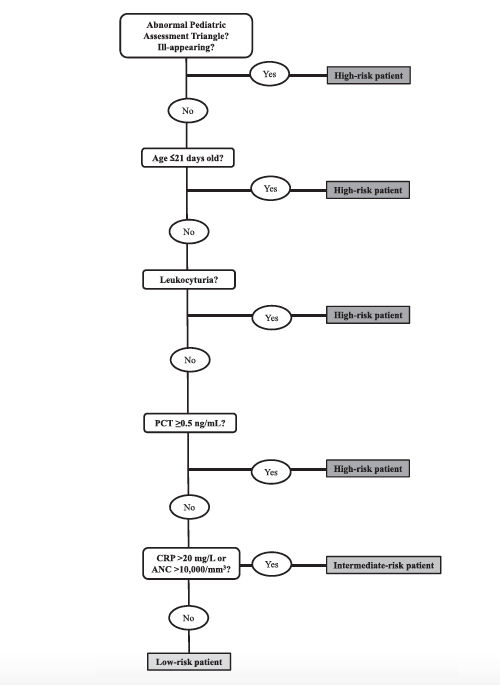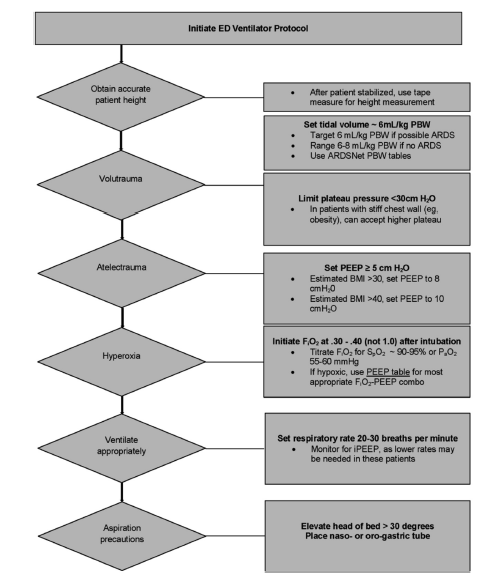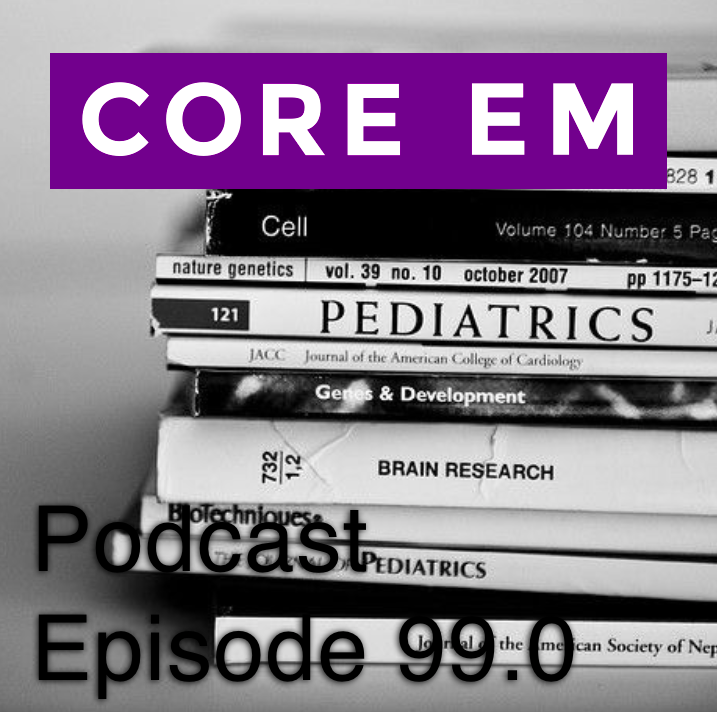This week we discuss 3 articles recently reviewed in our conference - LOV-ED study, Validation of Step-By-Step and Therapeutic Hypothermia.
Episode 99.0 – Journal Update
Show Notes
Take Home Points
- The step-by-step approach to managing febrile infants is a reliable decision instrument to identify patients at low risk for invasive bacterial infections. Caution in the group of patients 22-28 days of age.
- The LOV-ED study shows an association between employing a lung-protective ventilation strategy in the ED and decreased complications from mechanical ventilation. Best available evidence says that we should embrace this approach in the ED.
- Cooling to 33 degrees is no better than cooling to 36 degrees. However, shooting 36 degrees is more difficult than we may have thought. We have to continue to be vigilant about maintaining patients in the target temperature range and avoiding fever.

The Step-By-Step Algorithm

Lung-Protective Ventilation Protocol (LOV-ED Study)
Read More
The SGEM: SGEM #171: Step-by-Step Approach to the Febrile Infant
REBEL EM: The Benefit of Lung Protective Ventilation in the ED Should Be LOV-ED
Taming the SRU: A Crack in the Ice? An In-Depth Breakdown of the TTM Trial
References
Gomez B et al. Validation of the Step-by-Step Approach in the Management of Young Febrile Infants. Pediatrics. 2016 Aug. PMID: 27382134
Fuller BM et al. Lung-Protective Ventilation Initiated in the Emergency Department (LOV-ED): A Quasi-Experimental, Before-After Trial. Ann Emerg Med 2017. PMID: 28259481
Bray JE et al. Changing target temperature from 33oC to 36oC in the ICU management of out-of-hospital cardiac arrest: a before and after study. Resuscitation 2017; 113: 39-43. PMID: 28159575


